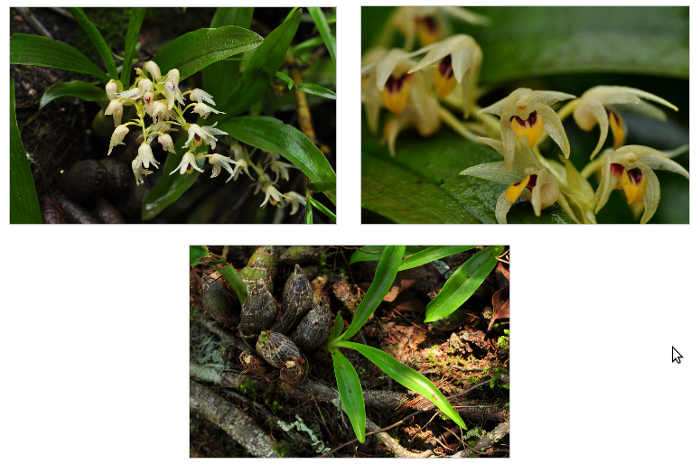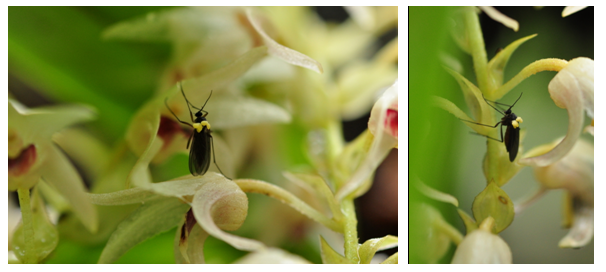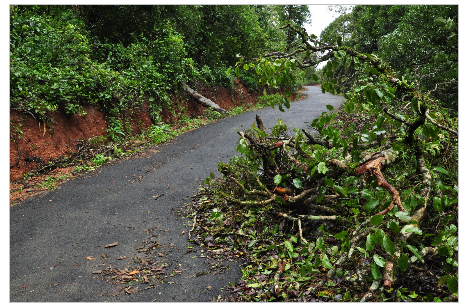Species of the Month – September 2013
Eria mysorensis Lindl.
Eria Lindl.
Eria Lindl. is an epiphytic, sympodial genus. There are over 370 species distributed across India and Pacific Islands. One or many leaves, pseudobulbs, long stem, and sizes range from tufted herb to robust plants. Many of these plants are extremely attractive when in flower and easy to grow. It is surprising therefore that they are not more common in cultivation. The majority are lowland plants requiring hot temperatures and high humidity although a few are from the higher altitudes.
Eria mysorensis Lindl.
It is a delight to see Eria mysorensis in bloom. Flowers are very attractive and are very fragrant. One can easily identify the plant having thick pseudobulbs that are reddish-brown in color; with 3-5 leaves that are moderately long. Drooping inflorescence rises between the leaves, with many straw-colored very fragrant flowers. Flowers are very beautiful with creamy-white petals and sepals, yellow colored fleshy lip with a purple throat.

Pollination:
Eria mysorensis flowers produce strong fragrance that attracts pollinators. When pollinator enters into the flower, it touches a viscidium (the sticky part of the male pollinia so that it can adhere to an insects back for transport to a female flower part), which promptly sticks to the body, generally on the head or abdomen. While leaving the flower, it pulls the pollinium out of the anther. When the pollinator enters the other flower of the same species, the pollinium has taken such position that it will stick to the stigma of the second flower, pollinating it.

Distribution:
This species is endemic to south India and very widely distributed in the Western Ghats and prefers altitude of above 900 m.
Cultivation:
Most of them thrive best in bright light and year round watering. They do equally well in pots hanging baskets or on slope. If grown in pots the medium should be well drained, but a small amount of moisture retaining ingredient such as moss may be added.
Threats:
‘Development’ in the forest ecosystem is a major threat for many of the orchid species. Be it the road widening or deforestation because of construction and the like. A lot of trees are being felled which is directly causing threats to such wonderful species. The photograph below is an example of such destructions. The tree was full of Eria mysorensis in bloom.

References:
1. Introduction to Orchids by Abraham and Vatsala
2. Wild Orchids of North Western Ghats by Satish Pande and et all.
Article contributed by : Srikanth Parthasarathy
All the photographs are from Coorg, Karnataka.